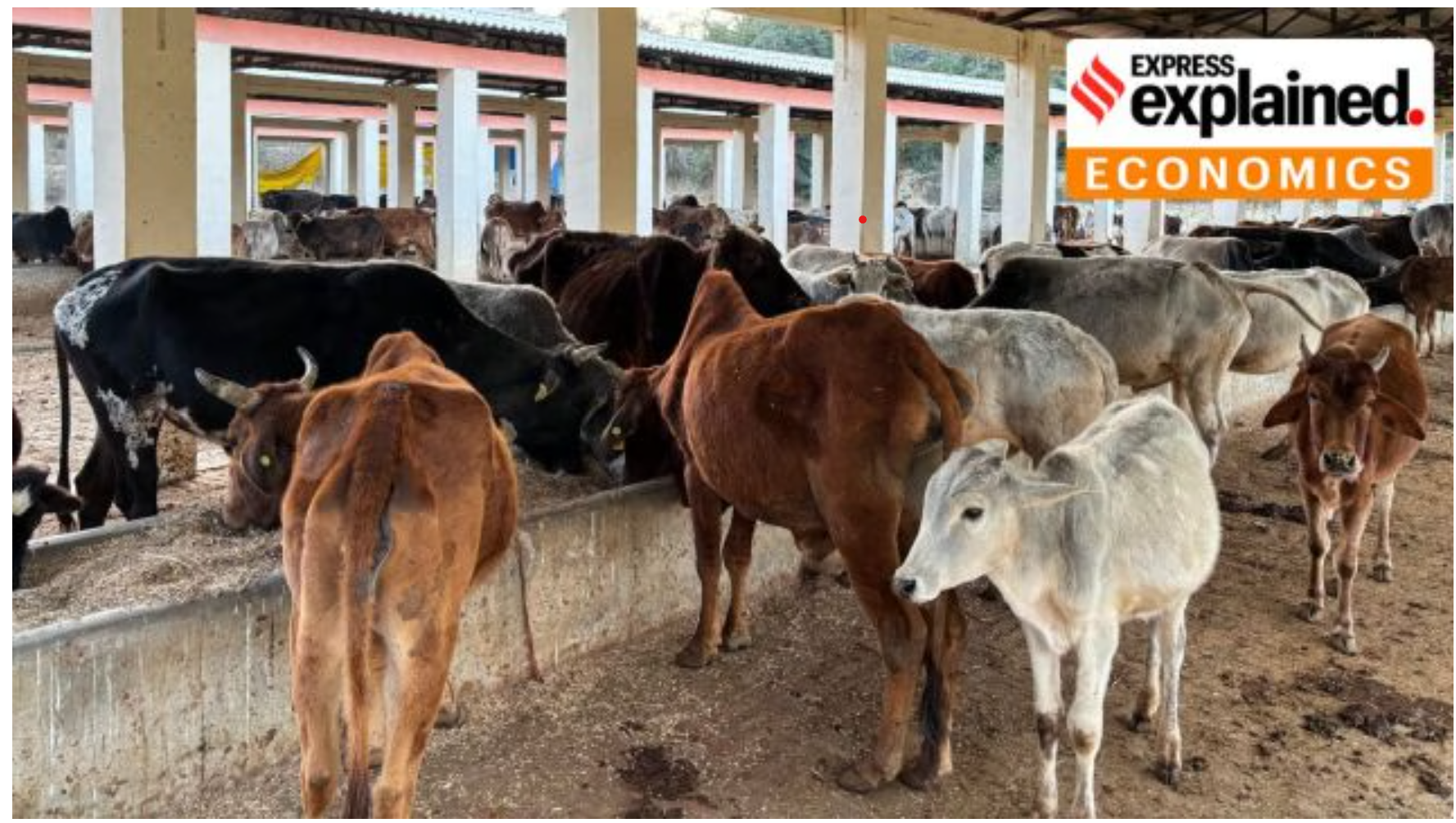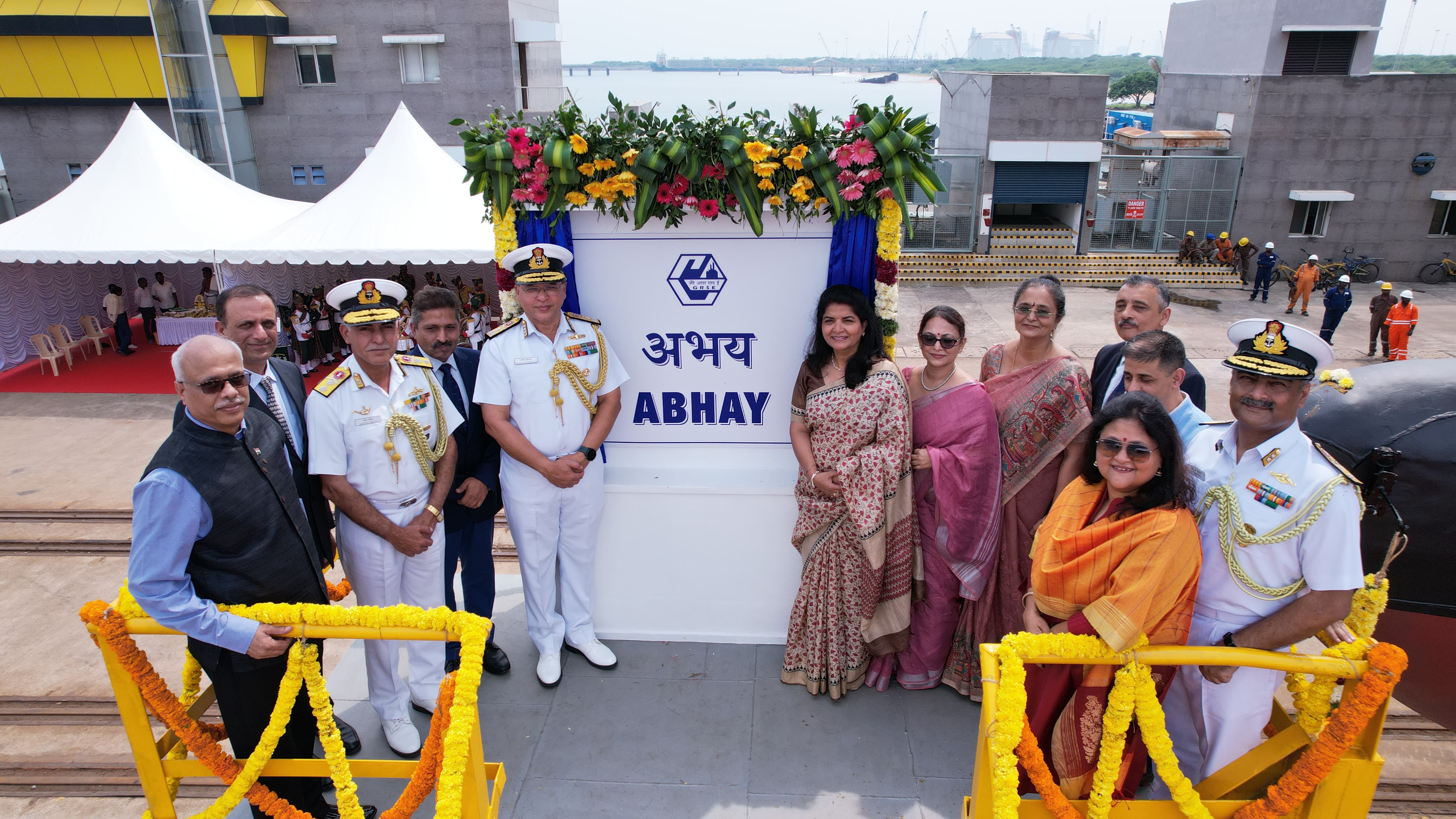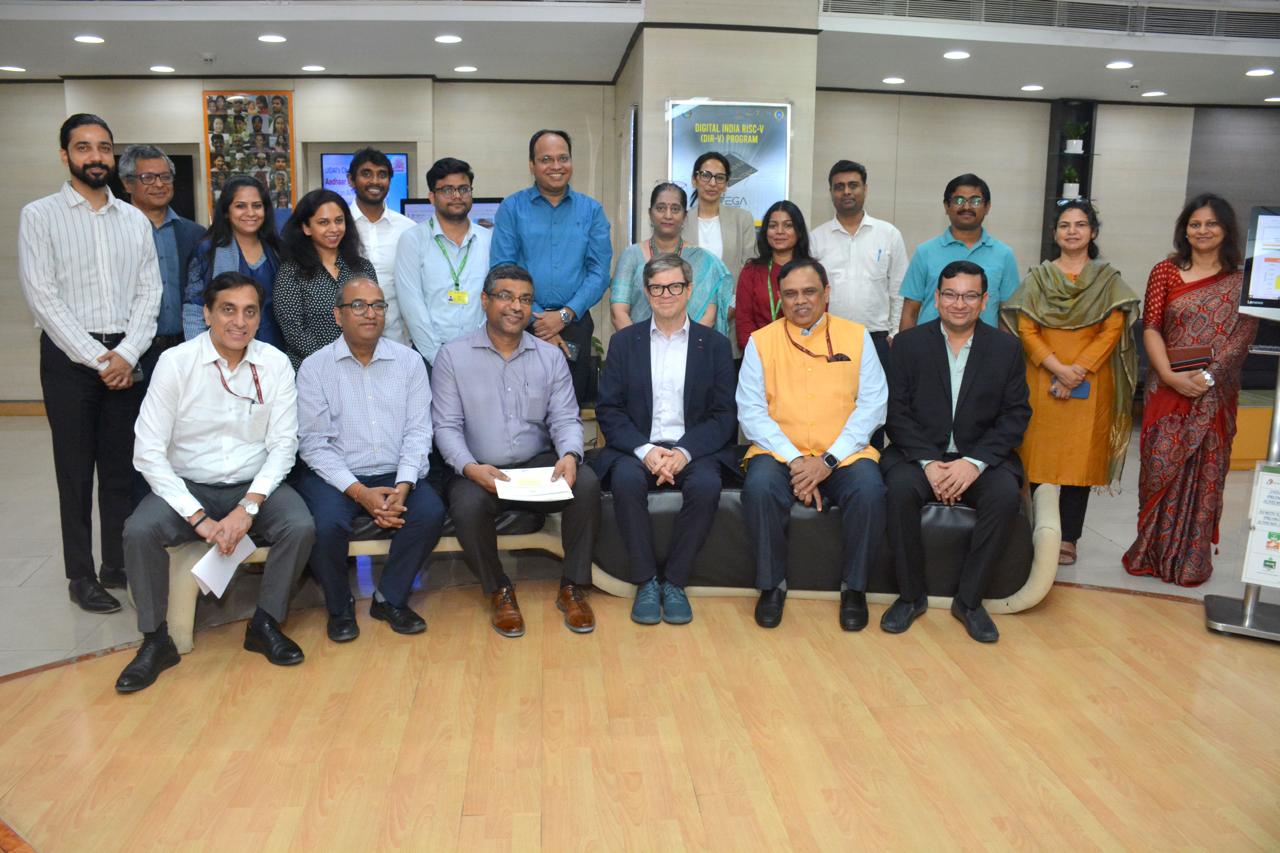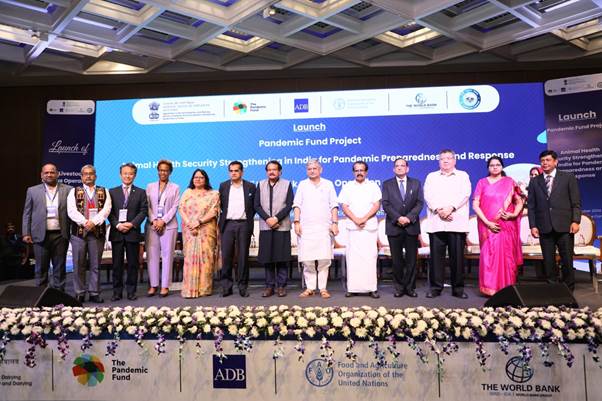ISRO-DBT Agreement for Biotechnology Experiments in Space

- 27 Oct 2024
In News:
- The Indian Space Research Organisation (ISRO) and the Department of Biotechnology (DBT) have signed an agreement to conduct biotechnology experiments on the upcoming Bharatiya Antariksh Station (BAS).
- Timeline for BAS:
- The BAS is expected to be operational from 2028-2035, with the initial module launches slated for 2028 and full expansion by 2035.
- It will be located at an altitude of 400 km above Earth and will support 15–20-day missions in space.
Focus Areas of Research
- Health Impact:
- Weightlessness & Muscle Health: Studying the effects of zero-gravity on muscle loss during space missions.
- Radiation Effects: Investigating how space radiation impacts astronaut health over long durations.
- Bio-Manufacturing:
- Algae Studies: Exploring algae for potential use in nutrient-rich, long-lasting food sources and biofuel production.
- Food Preservation: Identifying algae varieties that can help preserve food for longer periods in space.
- Integration with Gaganyaan Mission:
- Experiments may also be conducted during uncrewed test flights for the Gaganyaan mission (India’s first crewed mission to space, scheduled for 2025-2026).
BioE3 (Biotechnology for Economy, Environment and Employment) Policy
- Objective: The BioE3 policy aims to boost bio-manufacturing in India, which is projected to contribute $300 billion to the Indian economy by 2030.
- Key Focus Areas:
- High-Value Bio-Based Products: Promotes the development of bio-based chemicals, biopolymers, enzymes, and smart proteins.
- Climate-Resilient Agriculture & Carbon Capture: Aims to strengthen agricultural practices to withstand climate change and promote carbon capture technologies.
- Healthcare & Nutrition: Focuses on advancements in biotherapeutics, functional foods, and regenerative medicine.
- Marine & Space Biotechnology: Encourages research in space and marine biotechnology for new applications.
- Innovation & Entrepreneurship: Supports R&D-driven entrepreneurship through the establishment of bio-manufacturing hubs, bio-AI centers, and biofoundries.
- Employment Growth: Aims to create skilled jobs in the growing bioeconomy, promoting green growth and sustainable industries.
Bharatiya Antariksh Station (BAS) Overview
- Structure: The station will consist of:
- Command Module
- Habitat Module
- Propulsion Systems
- Docking Ports
- Objective: To support long-term research in space life sciences and bio-manufacturing, with a focus on human health, food sustainability, and biotechnology innovations.
21st Livestock Census

- 27 Oct 2024
In News:
The Livestock Census is a crucial tool for understanding the current status of India’s livestock sector and its contribution to the economy and society.
What is the Livestock Census?
- The Livestock Census is a nationwide survey conducted every five years to assess the number, species, breed, age, sex, and ownership status of domesticated animals and poultry, including stray animals.
- Purpose: It helps in collecting comprehensive data about the livestock population and their role in the economy and society.
- First Census: The first livestock census was conducted in 1919, and this is the 21st edition.
- Next Census: The 21st Livestock Census will be conducted between October 2024 and February 2025 by approximately 87,000 enumerators across 30 crore households in India.
Animals Covered in the Census
- The census will account for 16 species of animals, including:
- Cattle, Buffalo, Mithun, Yak, Sheep, Goat, Pig, Camel, Horse, Ponies, Mule, Donkey
- Dog, Rabbit, Elephant
- Poultry: Fowl, Chicken, Duck, Turkey, Geese, Quail, Ostrich, and Emu
- The census will also collect data on 219 indigenous breeds of these species recognized by the ICAR-National Bureau of Animal Genetic Resources (NBAGR).
Objectives of the Livestock Census
- Economic Contribution: The livestock sector contributes approximately:
- 30% of the Gross Value Added (GVA) of the agricultural sector
- 4.7% of India's overall GVA
- It plays a crucial role in rural employment, particularly in poultry and animal husbandry.
- Policy Formulation and Planning:
- The data from the census is critical for formulating and implementing policies related to livestock, ensuring sustainable growth in the sector.
- It helps in monitoring and estimating GVA from livestock.
- Sustainable Development Goals (SDGs):
- Provides vital data for tracking the progress towards Goal 2 of SDGs (Zero Hunger) and Target 2.5, which focuses on maintaining genetic diversity in livestock, particularly addressing local breeds at risk of extinction (Indicator 2.5.2).
- Sectoral Monitoring:
- The census helps in monitoring the performance and health of India’s livestock sector, which is vital for ensuring food security, rural livelihoods, and economic growth.
Key Features of the 21st Livestock Census
- Digitization:
- Like the 2019 Census, this year’s census will be fully digitized, with data collected via a mobile application.
- Digital Monitoring: A dashboard will monitor progress at various levels, and the latitude and longitude of the data collection locations will be recorded.
- A software-based livestock census report will be generated to streamline analysis.
- New Data Points:
- For the first time, data on pastoral animals and pastoralists will be collected, focusing on their socio-economic status and livestock holdings.
- Granular Data: The census will gather information on:
- Proportions of households that rely on livestock for major income.
- Gender-based data on stray cattle.
- Extended Scope:
- In addition to animal population statistics, the census will also focus on the socio-economic contributions of the livestock sector, gender inclusion, and employment.
Significance of the Livestock Census
- A Comprehensive Livestock Profile:
- Provides a holistic view of livestock population and the interlinkages between animal husbandry, agriculture, and rural economies.
- Assists in the management and preservation of indigenous animal breeds.
- Informed Decision-Making:
- Helps policymakers, researchers, and development organizations in formulating strategies for sectoral growth, genetic diversity preservation, and livelihood enhancement for rural communities.
- Monitoring Livestock Health:
- The census helps in tracking the health and sustainability of India’s livestock population, which is essential for ensuring food security and preventing animal diseases.
Findings of the 2019 Livestock Census
- Total Livestock Population: 535.78 million
- Cattle: 192.9 million
- Goats: 148.88 million
- Buffaloes: 109.85 million
- Sheep: 74.26 million
- Pigs: 9.06 million
- Other species contributed a small fraction to the total livestock population (0.23%).
Launch of 'Abhay'

- 27 Oct 2024
In News:
Recently, ‘Abhay’, the seventh ship in the Anti-Submarine Warfare Shallow Water Craft (ASW SWC) series was launched.
Key Details:
Project Background
- Contract Details: The Ministry of Defence (MoD) signed a contract with Garden Reach Shipbuilders & Engineers (GRSE), Kolkata, in April 2019 for the construction of eight ASW SWC ships.
- Class of Ships: The Arnala-class ships are intended to replace the older Abhay-class ASW Corvettes currently in service with the Indian Navy.
- Purpose: These ships are designed for anti-submarine warfare (ASW) operations in coastal waters and to conduct Low-Intensity Maritime Operations (LIMO) and mine-laying activities.
Design and Features of 'Abhay'
- Dimensions:
- Length: 77 meters
- Width: 10 meters
- Speed and Endurance:
- Maximum speed: 25 knots
- Endurance: 1800 nautical miles (NM).
- Propulsion: Waterjet-propelled, offering agility and swift response in tactical situations.
- Indigenous Content: Over 80% indigenous content, supporting India’s Aatmanirbhar Bharat (self-reliant India) initiative in defence manufacturing.
Capabilities of the ASW SWC
- Anti-Submarine Warfare:
- Designed to conduct subsurface surveillance and anti-submarine operations in coastal waters.
- Equipped with advanced sonar systems, including Hull-Mounted Sonar and Low-Frequency Variable Depth Sonar for enhanced underwater surveillance.
- Armament and Equipment:
- Torpedoes and ASW rockets for anti-submarine operations.
- Mines for mine-laying operations.
- Close-in Weapon System (CIWS): 30 mm for close-range defence against aerial and surface threats.
- 12.7 mm Stabilized Remote-Control Guns for additional defensive capability.
Strategic Importance
- Coastal Defence: The ASW SWC ships enhance the Navy’s capability to defend India’s extensive coastline and exclusive economic zone (EEZ) against submarine threats.
- Operational Role:
- In addition to anti-submarine warfare, these ships can conduct Low-Intensity Maritime Operations (LIMO), which include operations against non-traditional threats.
- Mine-laying capability to disrupt enemy naval operations.
- Advanced Detection: These ships are equipped to track both surface and underwater targets, enabling them to coordinate operations with aircraft, strengthening maritime security.
Center for Generative AI, Srijan

- 27 Oct 2024
In News:
IndiaAI and Meta have announced the establishment of the Center for Generative AI, Srijan (????) at IIT Jodhpur, along with the launch of the “YuvAi Initiative for Skilling and Capacity Building” in collaboration with the All India Council for Technical Education (AICTE), for the advancement of open source artificial intelligence (AI) in India.
Key Initiatives Launched
- Center for Generative AI, Srijan (????) at IIT Jodhpur:
- Focus on Generative AI (GenAI) research and innovation.
- Meta’s support for ethical and responsible development of AI technologies.
- Aim to empower researchers, students, and practitioners with the tools for responsible AI deployment.
- Focus Areas: Open science, AI policy advisory, and indigenous AI application development.
- YuvAi Initiative for Skilling and Capacity Building:
- Target: Empower 100,000 students and young developers (ages 18-30) with AI skills.
- Core Focus: Leveraging open-source Large Language Models (LLMs) for real-world solutions.
- Skills Development: Generative AI, open-source tools, and sector-specific AI applications (healthcare, education, agriculture, smart cities, mobility, and financial inclusion).
- Partnership: Collaboration with AICTE (All India Council for Technical Education).
Strategic Goals and Outcomes
- Research and Innovation:
- Strengthen India’s AI ecosystem through groundbreaking research and collaborations.
- Focus on open-source AI and indigenous AI solutions for national challenges.
- Empower India to lead in AI through ethical and responsible AI deployment.
- AI Talent Development:
- Bridge the AI talent gap by training young developers in open-source AI technologies.
- Develop AI solutions for critical sectors like healthcare, education, agriculture, smart cities, and financial inclusion.
- Program Components:
- GenAI Resource Hub with courses, case studies, and open datasets.
- Unleash LLM Hackathons for students to propose AI solutions for real-world challenges.
- Support for AI startups through an Innovation Accelerator.
Sectoral Focus and Impact
- Healthcare: AI for diagnostics, personalized medicine, and healthcare delivery.
- Education: AI tools for enhancing learning outcomes and personalized education.
- Agriculture: AI solutions for precision farming, pest control, and crop management.
- Smart Cities: AI in urban planning, traffic management, and public services.
- Mobility: AI applications in transportation, logistics, and urban mobility.
- Financial Inclusion: AI in fintech, digital payments, and financial services for underserved populations.
Additional Programs and Opportunities
- AICTE Collaboration: Mobilizing technical institutions across India to build AI capabilities.
- Master Training Activation Workshops: To introduce foundational AI concepts to students.
- Mentorship and Grants: Top AI solutions from hackathons will receive mentoring, seed grants, and market support.
- Student Startups: AI Innovation Accelerator will incubate 10 student-led AI startups experimenting with open-source models.
Pandemic Fund Project

- 27 Oct 2024
In News:
Recently, the Union Minister Shri Rajiv Ranjan Singh, Ministry of Fisheries, Animal Husbandry and Dairying launched the Pandemic Fund Project on "Animal Health Security Strengthening in India for Pandemic Preparedness and Response"in New Delhi.
Key Highlights:
Launch of Pandemic Fund Project
- Objective: Strengthening animal health security in India to enhance pandemic preparedness and response.
- Funding: $25 million initiative funded by the G20 Pandemic Fund.
- Location: New Delhi, Ministry of Fisheries, Animal Husbandry, and Dairying.
Context and Importance
- Livestock Sector: Crucial for socio-economic upliftment, contributing to employment and rural development.
- Growth in Livestock Sector: Significant progress in the last 9 years through schemes like the National Animal Disease Control Program (NADCP).
- Key Diseases Targeted:
- Foot and Mouth Disease (FMD): Aimed at eradication, with over 90.87 crore vaccines administered.
- Brucellosis: Over 4.23 crore vaccines administered.
Objectives of the Pandemic Fund Project
- Enhanced Disease Surveillance: Includes genomic and environmental monitoring for early warning systems.
- Laboratory Infrastructure Development: Upgradation for better diagnosis and disease management.
- Cross-Border Collaboration: Strengthening partnerships for global monitoring of zoonotic diseases.
- Integrated Monitoring System: Creation of a robust system for managing zoonotic diseases, with a focus on early detection and containment.
Documents Released for Strengthening Animal Health
- Standard Veterinary Treatment Guidelines (SVTG):
- Best practices for veterinary care to improve livestock health and productivity.
- Supports national action plans, especially for combating antimicrobial resistance.
- Crisis Management Plan (CMP) for Animal Diseases:
- Framework for effective response and containment during animal disease outbreaks.
- Ensures timely mitigation of animal disease crises.
One Health Approach
- Integration of Human, Animal, and Environmental Health: Key to preventing and managing future health crises.
- Zoonotic Risks: The project emphasizes reducing zoonotic disease transmission from animals to humans, crucial given the origins of many recent public health emergencies.
Implementation and Collaboration
- The project will be executed in collaboration with global institutions:
- Asian Development Bank (ADB)
- Food and Agriculture Organization (FAO)
- World Bank
